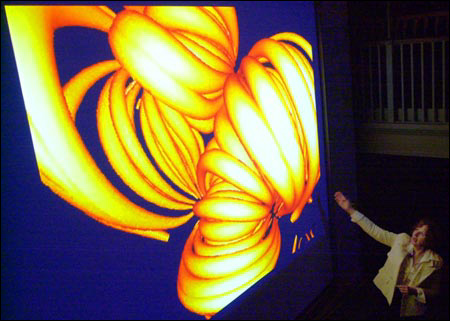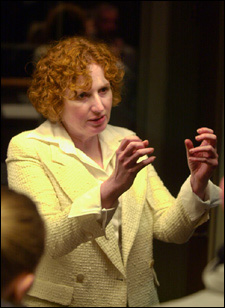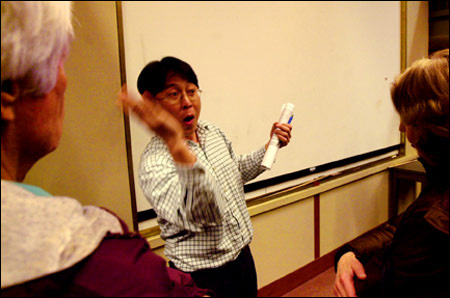Global warming is not so hot:
1003 was worse, researchers find

The heat and droughts of 2001 and 2002, and the unending winter of 2002-2003 in the Northeast have people wondering what on Earth is happening to the weather. Is there anything natural about such variability?
To answer that question, researchers at the Harvard-Smithsonian Center for Astrophysics (CfA) – right in the heart of New England’s bad weather – took a look at how things have changed in the past 1,000 years. They looked at studies of changes in glaciers, corals, stalagmites, and fossils. They checked investigations of cores drilled out of ice caps and sediments lying on the bottom of lakes, rivers, and seas. They examined research on pollen, tree rings, tree lines, and junk left over from old cultures and colonies. Their conclusion: We are not living either in the warmest years of the past millennium nor in a time with the most extreme weather.

This review of changes in nature and culture during the past 1,000 years was published in the April 11 issue of the Journal of Energy and Environment. It puts subjective observations of climate change on a much firmer objective foundation. For example, tree-ring data show that temperatures were warmer than now in many far northern regions from 950 to 1100 A.D.
From 800 to 1300 A.D., the Medieval Warm Period, many parts of the world were warmer than they have been in recent decades. But temperatures now (including last winter) are generally much milder than they were from 1300 to 1900, the Little Ice Age.
To come to this coclusion, CfA researchers, along with colleagues from the Center for the Study of Carbon Dioxide and Global Change in Tempe, Ariz., and the Center for Climatic Research at the University of Delaware, reviewed more than 200 studies of climate done over the past 10 years. “Many research advances in reconstructing ancient climate have occurred over the past two decades, so we felt it was time to pull together a large sample of them and look for patterns of variability and change,” says Willie Soon of CfA. “Clear patterns did emerge showing that regions worldwide experienced higher temperatures from 800 to 1300 and lower temperatures from 1300 to 1900 than we have felt during our lifetimes.”
Nature still rules
Does this mean that the present global warming is more a product of natural changes than of carbon dioxide emissions and other industrial regurgitations? Soon won’t go that far. But he does say “there’s increasingly strong evidence that previous research conclusions, including those of the United Nations and the United States government concerning 20th century warming, may have been biased by underestimation of natural climate variations. The bottom line is that if these variations are indeed proven true, then, yes, natural climate fluctuations could be a dominant factor in the recent warming. [The year 1998 was the warmest year on record, followed by 2002, then 2001.] In other words, natural factors could be more important than previously assumed.”

Soon and colleagues believe their findings will contribute to computer models that simulate natural and human influences on climate more accurately. That should lead to better climate forecasts, including those on local and regional levels. Such forecasts, in turn, could help make it easier to reach international agreements on treaties to control emissions of industrial gases that contribute to global warming. One reason the administration of President Bush gives for not signing the international 1997 Kyoto Protocol to limit carbon dioxide emissions is that sufficient scientific information about the cause of global warming is lacking.
Vikings enjoy Greenland beaches
Plenty of anecdotal evidence exists for warmer times and decades of more frigid and extreme weather than we are now experiencing.
Extended television and government forecasts didn’t exist during the 16th to 18th centuries, but many Flemish and Dutch artists, like Pieter Brueghel and Hendrick Avercamp, depicted severe Little Ice Age winters in their paintings.
CfA’s Sallie Baliunas, a co-author of the study, refers to the medieval Viking sagas as examples of unusual warming around 1003 A.D. “The Vikings established colonies in Greenland at the beginning of the second millennium, but they died out several hundred years later when the climate turned colder,” she notes. “And good evidence exists that vineyards flourished in Scotland and England during the medieval warmth.”
The evidence also shows that the warmer and colder times occurred not just in Europe, but in places all over the world. Entered into computer simulations that can send us backward and forward hundreds of years in a matter of days, the new information should make forecasts and hindcasts of climate much more accurate.




